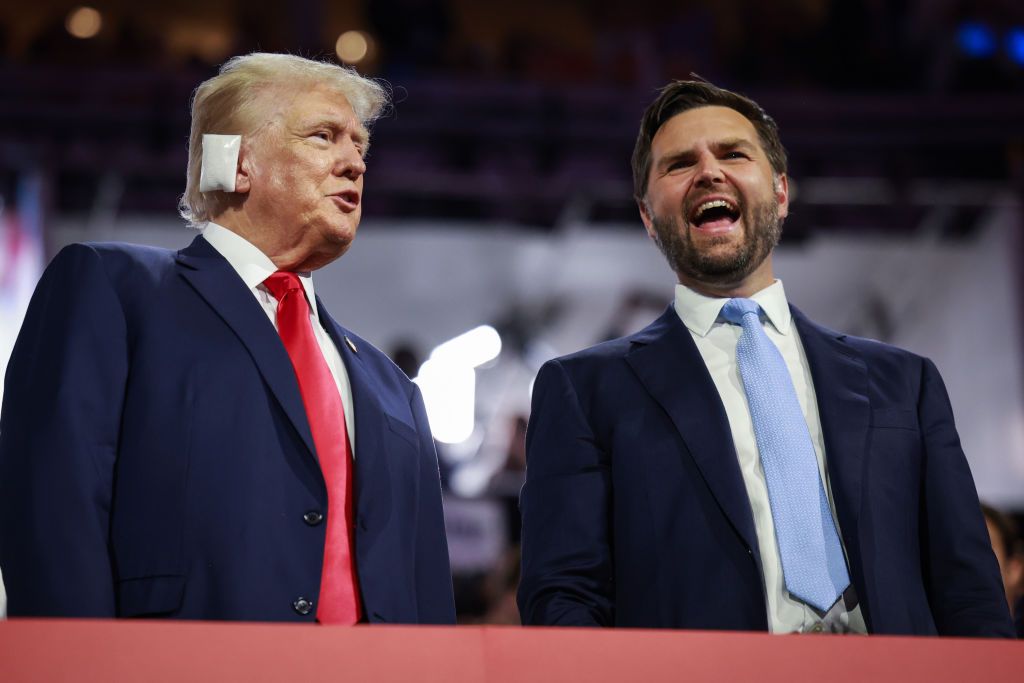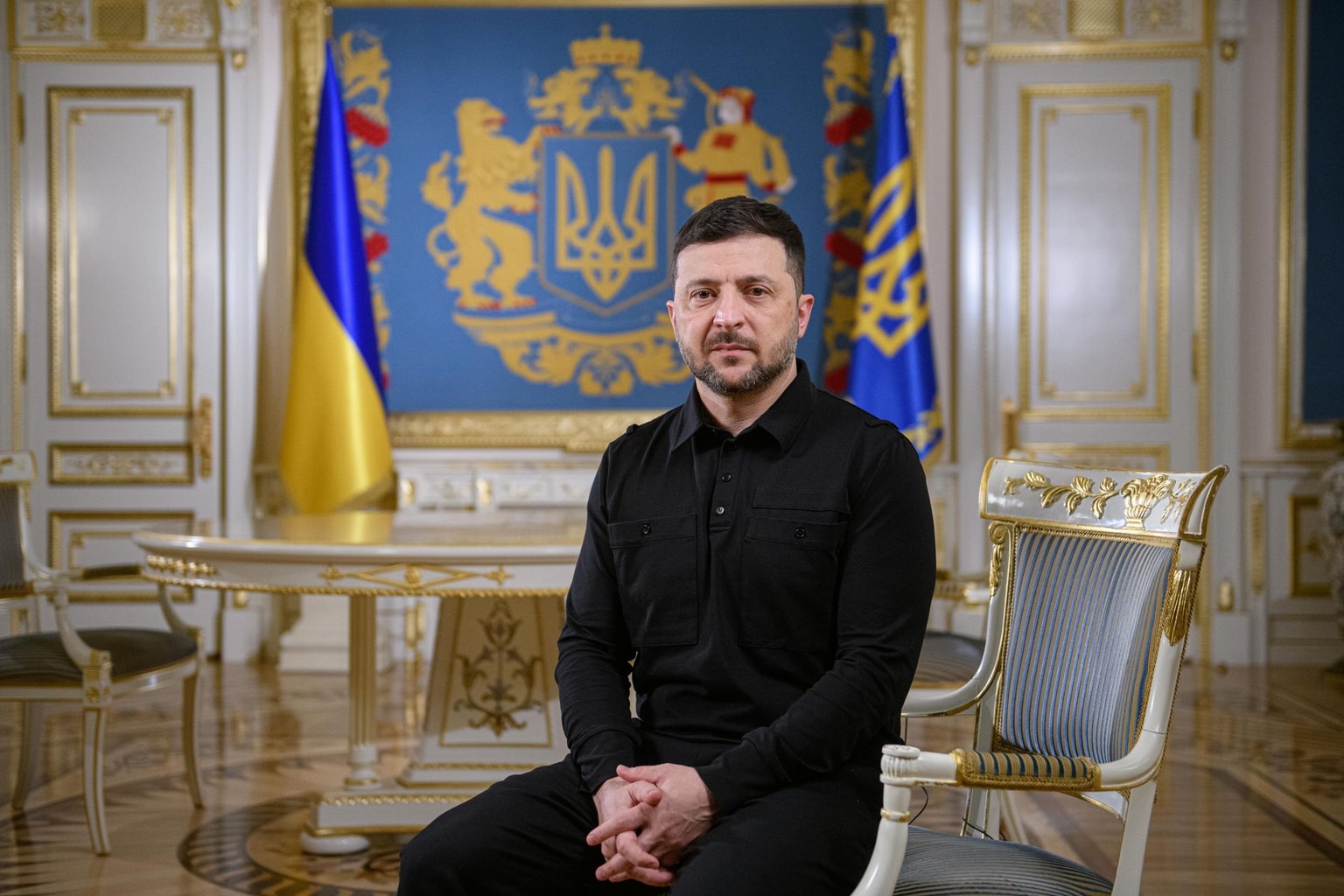
Opinion: Could Ukraine survive a JD Vance vice presidency?
Now-Republican vice-presidential running mate J.D. Vance arrives on the first day of the Republican National Convention at the Fiserv Forum in Milwaukee, Wisconsin, U.S. on July 15, 2024. (Andrew Harnik/Getty Images)

Timothy Ash
Associate Fellow at Chatham House
Former U.S. President and Republican presidential candidate Donald Trump’s nomination of J.D. Vance as his vice-presidential running mate has sent shockwaves across the Western alliance, particularly Ukraine, which is on the front lines of Western liberal democracy’s battle against authoritarianism.
Vance has been strident in his message that Europe has, for too long, free-ridden on the coattails of the U.S. security umbrella. He has also questioned whether supporting Ukraine in its war with Russia is in U.S. interests, viewing it as a distraction from the greater battle with China for global hegemony. The assumption now is that a Trump/Vance victory in the upcoming U.S. presidential election would see the new administration force Ukraine to the negotiating table with Russia or risk losing U.S. support.
The general assumption is that Vance would suggest a deal that freezes the front lines at their current state. Russia would be offered assurances of no further NATO enlargement east, while Ukraine might be given certain security guarantees – or at least a commitment from the U.S. and its allies to supply sufficient arms to defend against future Russian attacks. Vance et al. may also accept Russian territorial gains in Ukraine in exchange for a commitment to no further Russian advances or attacks on Ukraine and perhaps even sanctions moderation.
The fear is whether Russian President Vladimir Putin can be trusted to abide by any such deal. He has not honored numerous prior agreements, including the Budapest Memorandum or the Minsk agreements. Notably, in the run-up to Russia’s full-scale invasion of Ukraine in 2022, Putin and his entourage continuously stressed they had no intention of invading Ukraine – though, by that stage, they would say that, wouldn’t they? Putin also has a long track record of invading Russia’s neighbors.
This also begs the question of whether Putin’s full-scale invasion of Ukraine was to secure only those five Ukrainian oblasts, which give him a land corridor to Crimea, and to push back on eastward NATO enlargement. I think not, as his writing suggests that Putin has a fundamental problem with the very existence of Ukraine as an independent, sovereign state, which I believe explains the invasion. He wants the whole of Ukraine.
Hence, Putin might just take any such deal or “gift” from Vance, banking the territory he currently occupies, regrouping, rearming, and preparing to go again to take further territory. Ultimately, the end game would be the total reconquest of Ukraine. Imagine then the ultimate result of Vance’s plans for peace: Russia greatly expanded, adding Ukraine’s significant military-industrial complex to its own.
This would also send tens of millions of Ukrainians west, further destabilizing Europe and fanning the flames of populism and centrifugal forces. Europe, a major U.S. ally, would be significantly weakened, providing more opportunities for Russia’s further expansion. Vance will have breathed new life into the murderous Putin regime, resurrecting Russia as a near-peer competitor with the U.S. and China.
For Ukraine, any peace deal currently suggested by Vance et al. would be painful to accept after two and a half years of valiant defense. Politically, it would be difficult for Ukrainian President Volodymyr Zelensky to sell at home. A recent opinion poll by the Razumkov Center showed increased support (44%) for peace talks with Russia, but 83% in the same poll rejected the idea of a Ukrainian military withdrawal from the oblasts partially occupied by Russia, which Putin has demanded as a prior condition for talks. Any such peace talks, and a subsequent ceasefire, might undermine political stability in Ukraine, sowing internal discord that Putin could exploit to attack further and take more territory.

Even if Ukraine accepted an unpopular peace, such an agreement would need to be adequately financed. Ukraine would require significant and continued financial support to ensure successful recovery and reconstruction, underpinning the economy to finance its future defense. There is little in the messaging from Vance et al. to suggest there is U.S. appetite for this, and the experience of G7 support for Ukraine has been inconsistent. Is Europe willing to provide the likely hundreds of billions of euros needed for reconstruction to ensure Ukrainian stability and defense against future Russian aggression? So far, the West has shown a lack of coordinated effort, and while support does eventually come, it often appears too little too late.
Understandably, the prospect of being forced into a peace deal that falls short of expectations might not appeal to many Ukrainians. However, the threat of losing U.S. support, finance, and weapons might still concentrate their minds and encourage participation in peace talks. Being forced to the negotiating table by an outside power like the U.S. might also help Zelensky politically sell peace talks at home.
The question is, does Ukraine have any alternative? Can Ukraine fight on without U.S. support?
U.S. support for Ukraine since the full-scale invasion has been significant. However, despite what Vance et al. might think, U.S. support has been eclipsed by that of Europe and other allies. According to the Kiel Institute’s Ukraine tracker, U.S. support for Ukraine from the start of the full-scale invasion in February 2022 to the end of April 2024 is 74 billion euros ($81 billion), compared to 102 billion euros ($111.6 billion) from Europe. Adding $15 billion euros ($16.4 billion) from other allies and over $10 billion euros ($10.9 billion) from various multilateral lenders, the U.S. share of support comes in at just under 40% of the total.
Given Europe’s 20 trillion-dollar-plus economy, it could presumably cover the financial void left by the U.S. stepping back. However, it’s notable that the U.S. share in military support is around half of the 100 billion euros ($109 billion) provided by Western allies through the end of April. The issue is not just money but the U.S. provision of key equipment and military-technical assistance, which will be very difficult for European allies to cover. Europe simply lacks Patriots, HIMARS, and other critical equipment to fill the gaps left by the U.S. pulling back.
A question arises: Would a Trump administration be willing to say no if Europe and Ukraine came knocking to purchase the full list of U.S. weaponry and munitions? Vance argues that the U.S. simply lacks the industrial capacity to supply Ukraine and now needs to refill stocks for its own list of priority threats, particularly those from China. However, it will probably still be hard to say no to orders for tens of billions of dollars for military equipment made in red states.

Presumably, U.S. President Joe Biden’s administration is already preparing for the possibility of a Trump win in November. I assume that a significant portion of the $61 billion in U.S. assistance for Ukraine, approved by Congress in November, will be front-loaded. Additionally, much of the new $50 billion G7 facility for Ukraine, which securitizes the interest stream on frozen Russian assets, could also be earmarked for Ukraine to purchase weapons. This infusion will bolster Ukraine’s purchasing power. Furthermore, Ukraine still retains $40 billion in its own foreign exchange reserves.
All this suggests that Ukraine could sustain itself well into 2025 and possibly beyond, even if a Trump administration cuts financing and supplies upon taking office. Ukraine could fight on for some time, in the event that any imposed peace is just too unpalatable. Europe, particularly the U.K., the Baltic states, Poland, and Scandinavia, which understand the Russian threat well, would likely continue to support Ukraine. However, as Ukraine depletes its U.S. military munitions supplies, it faces increased vulnerability, particularly as its air defenses weaken and casualties mount. Ultimately, this could diminish support for prolonging the war.
But even if U.S. support is withdrawn, Russia might struggle to immediately seize the initiative. Ukraine could still potentially bog Russia down in a long, debilitating war. Russia would still face the monumental challenge of capturing and occupying Ukraine, a vast country. Such an occupation against a resistant population would likely result in stubborn resistance, costing Russia significant blood and treasure, both of which are finite resources. Russia's position in the Black Sea would also remain vulnerable to Ukrainian use of maritime drones and long-range missiles supplied by countries such as the U.K., France, and potentially Germany and Italy in the future.
All of the above suggests that U.S. pressure to force an early end to the war may not achieve that outcome. Ukraine might choose to continue fighting against the odds. Events since February 2022 have shown that Ukrainians cannot be underestimated – they have bravely held back a supposed global superpower for over two and a half years
Meanwhile, the type of peace deal Vance and others might consider imposing on Ukraine might not be sustainable. Russia is unlikely to adhere to its terms; Putin could accept concessions made by Vance on behalf of Ukraine and later pursue further gains. This outcome would be disastrous for Ukraine and, ultimately, for European security.
Considering these risks, Ukrainians might prefer to persevere, hoping they can endure and potentially witness another scenario akin to the Yevgeny Prigozhin incident, leading to Putin's downfall and their liberation.
Editor’s Note: The opinions expressed in the op-ed section are those of the authors and do not purport to reflect the views of the Kyiv Independent.












